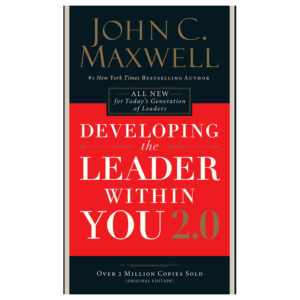
The measure of intelligence is the ability to change. – Albert Einstein
Among the many NFL quarterbacks good at calling audibles, Peyton Manning would certainly have to be at or near the top of any list as one of the best.
How many times during a game did you hear that infamous, “Omaha, Omaha,” audible be called?
A few years back, Manning finally explained what it meant. He said, “Omaha was just an indicator word. It was a trigger word that meant we had changed the play, there was low time on the clock and the ball needed to be snapped right now to kind of let my offensive lineman know that ‘Hey, we’d gone to Plan B, there’s low time on the clock.’ It’s a rhythmic word, O-ma-ha, set hut.” Now you know.
What made Manning so good during his career was his ability to read the defense and have the wherewithal to change plays on a dime. He was a tireless student of the game.
Nick Kosmider shared about how Manning once had his backup QBs watch the previous week’s broadcast to find when field mics caught the audio of his audible calls. During prep for one game, Manning was alerted that his “badger” call had come across clearly on TV the week prior. So he said, “We’re going to make that a dummy audible this week.”
In the game, Peyton said, “Badger, badger!” You can literally see the linebackers and defensive linemen say, “Run right, Run right, let’s go!”. So he fakes the handoff, linebackers are biting hard, he boots out and throws a wide-open bootleg pass to Julius Thomas.” All because of the dummy audible.

Peyton played at a higher level than most and one of the reasons why was his ability in real-time to assess the defense and call the audible.
As a leader, your ability to assess situations going on around you in real-time is important. Circumstances change. Things you planned and prepared for change. The unexpected happens. Your ability to lead your team in those moments is crucial. But how do we know when it’s time to do so? What triggers those calls? Here are a few observations about calling audibles that might be helpful.
Calling audibles is about your instincts
Simon Sinek says, “Great leaders and great organizations are good at seeing what most of us can’t see. They are good at giving us things we would never think of asking for.” And this is what makes great quarterbacks and great leaders stand out from the rest – the ability to see what others don’t and the ability to change when necessary. Having good instincts doesn’t just happen by chance. More on that in a moment.
Calling audibles is about having confidence
The confidence a leader has in her abilities and the confidence that’s placed in her – based on a proven track record- creates chemistry among that team that will be hard to stop. When the leader calls an audible and the team runs a different play, it’s done so and executed because of the confidence of the leader and the bond of trust that’s been formed. Click To Tweet
Calling audibles is about preparedness
Quarterbacks don’t call an audible just for the sake of calling one. In an interview, Manning said, “On TV it may have looked frantic and spontaneous, but the truth is I practiced every audible I ever called, and I practiced it with my teammates.” For Manning, it wasn’t about “winging it” as he says but preparing for any and every contingency on the field.
Final Thoughts
The smart leaders and teams work on a similar plan – they work hard and work together, have a game plan, prepare audibles just in case, and execute to the best of their abilities. Win or lose, they do it as a team.
©2021 Doug Dickerson
* Full Disclosure: As a Tennessee native and Vol fan, I am obviously a fan of Peyton Manning. I was fortunate enough to see him play once while at Tennessee. It was October 1, 1994. Tennesse beat Arkansas 38-21.









 In the book,
In the book, 



